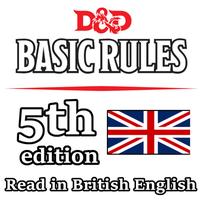Using These Rules
The D&D Basic Rules document has four main parts. Part 1 is about creating a character, providing the rules and guidance you need to make the character you'll play in the game. It includes information on the various races, classes, backgrounds, equipment, and other customization options that you can choose from. Many of the rules in part 1 rely on material in parts 2 and 3.
Part 2 details the rules of how to play the game, beyond the basics described in this introduction. That part covers the kinds of die rolls you make to determine success or failure at the tasks your character attempts, and describes the three broad categories of activity in the game: exploration, interaction, and combat.
Part 3 is all about magic. It covers the nature of magic in the worlds of D&D, the rules for spellcasting, and a selection of typical spells available to magic-using characters (and monsters) in the game. Part 4 is especially for the Dungeon Master. It contains instructions for how to challenge the player characters with adversaries that are a good test of their abilities, plus dozens of ready-to-use monster descriptions. It also provides a sampling of magic items that the characters can earn as their rewards for vanquishing those monsters.
The end of the document contains supplemental material. Appendix A collects all the definitions of conditions that can affect characters and monsters. Appendix B is a brief discussion of deities in the game, particularly those in the Forgotten Realms setting. Appendix C describes the five factions in the Forgotten Realms that characters can become associated with. Finally, a three-page character sheet provides a standardized way for players to record and keep track of their characters' abilities and possessions.

